I've written a piece of code, which creates a vector 'scoreboard' that contains 3 seperate vectors of size 3, all containing the symbol ? at all indices 0-2. When i now execute a 'vector-set!' on the first vector of scoreboard, to change its first element to a 'X, vectors 2 and 3 will change too. How does this occur?
(define scoreboard (make-vector 3 (make-vector 3 '?)))
(define (display-scoreboard)
(display (vector-ref scoreboard 0))
(newline)
(display (vector-ref scoreboard 1))
(newline)
(display (vector-ref scoreboard 2))
(newline))
(define (X! pos)
(cond
((>= 3 pos) (vector-set! (vector-ref scoreboard 0) (- pos 1) 'X))
))
(display-scoreboard)
(X! 1)
(newline)
(display-scoreboard)
output:
#(? ? ?)
#(? ? ?)
#(? ? ?)
#(X ? ?)
#(X ? ?)
#(X ? ?)
Desired output:
#(? ? ?)
#(? ? ?)
#(? ? ?)
#(X ? ?)
#(? ? ?)
#(? ? ?)
